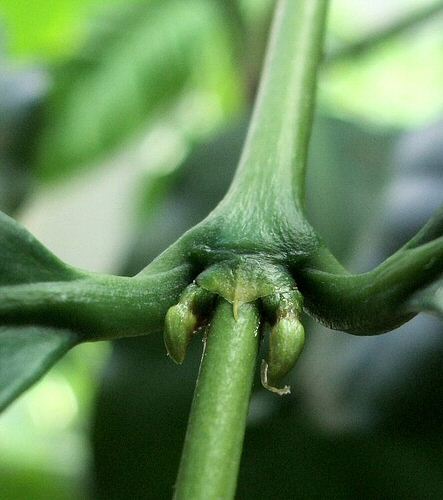 The Rainforest Alliance Cupping for Quality award breakfast at the Specialty Coffee Association of America (SCAA) annual trade show is always the first function we attend each year at this event. The award is designed to recognize exceptional coffees carrying the Rainforest Alliance seal and to highlight the linkage between sustainable farm management practices and cup quality.
The Rainforest Alliance Cupping for Quality award breakfast at the Specialty Coffee Association of America (SCAA) annual trade show is always the first function we attend each year at this event. The award is designed to recognize exceptional coffees carrying the Rainforest Alliance seal and to highlight the linkage between sustainable farm management practices and cup quality.
The number of farms that are RA certified, and thus participating in the award program, has grown a lot since the awards began in 2003. Last year, RA sought to manage this growth by having two annual cuppings and awards, divided by geography. In December, coffees from the southern hemisphere — including Brazil, Peru, Kenya, Tanzania and Indonesia — compete. These are the results of the December 2010 cupping, which included coffee from 35 competitors. In my next post, I’ll give the most recent winners, announced this morning at the breakfast.
 Quecha, Peru (85.88). A brand of the CECOVASA farmer cooperatives, the Quecha coffees are grown at 1400 to 1750 meters in the Sandia valleys region of the Andes. CECOVASA is Fair Trade certified, and about half the members grow organic-certified coffee. Since 1998, CECOVASA has worked with Conservation International, and two years ago was recognized for its work preserving biodiversity by the Peruvian ministry of the environment. Last year, another CECOVASA coffee, Tunki, placed second in this competition (it also won best of origin in the SCAA Coffee of the Year competition), and Quecha came in 5th. Congrats to this hard-working federation for the excellent coffees they are producing, in a really sustainable manner!
Quecha, Peru (85.88). A brand of the CECOVASA farmer cooperatives, the Quecha coffees are grown at 1400 to 1750 meters in the Sandia valleys region of the Andes. CECOVASA is Fair Trade certified, and about half the members grow organic-certified coffee. Since 1998, CECOVASA has worked with Conservation International, and two years ago was recognized for its work preserving biodiversity by the Peruvian ministry of the environment. Last year, another CECOVASA coffee, Tunki, placed second in this competition (it also won best of origin in the SCAA Coffee of the Year competition), and Quecha came in 5th. Congrats to this hard-working federation for the excellent coffees they are producing, in a really sustainable manner!- Wahana Grahamakmur (exporter), Indonesia (83.65).
- Fairview Estate, Kenya (83.23). Managed by Coffee Management Services. Growing the SL28 variety on 121 ha at 1750 m. Natural forest on the property is preserved, reforestation efforts have taken place, as has the planting of shade trees. Also UTZ certified.
- Thiriku Farmers Co-op Society, Kenya (83.02). Nyeri – SL28 and SL34 at 1700 m.
- Ipanema Agricola, Brazil (82.96). An enormous enterprise, often considered the largest single producer in the world, at 2600+ ha. They do produce single-farm brands, but no information on the particular source of this coffee was given.
- Ibonia Estate, Kenya (82.81). Managed by Coffee Management Services.
- Fazenda Itaoca, Brazil (82.75). 215 ha total, of which 30% is reserve land, in Mantiqueira region, southern Minas Gerais.
- Korona Enterprise Ltd, Papua New Guinea (82.67). Female owned from near Aiyura in the Eastern Highlands.
- Yandini Estate, Kenya (82.46). Managed by Coffee Management Services. Also UTZ Certified.
- Baragwi Farmers Co-op Society, Kenya and Kandara Farmers Co-op Society, Kenya (tie, 82.17). Baragwi has 1200 members, and is in Kirinyaga district and grows both SL28 and SL34 at 1600 m. Kandara grows SL28 and Ruiru 11 varieties at 1600 to 1800 m in the Kandara area, and this was one of the first producer organizations in Kenya to get RA certification.
Previous results reported on here:
- Rainforest Cupping for Quality 2010, round 2 (#1 = El Injerto, Guatemala — 89.73).
- Rainforest Alliance Cupping for Quality 2010 winners, first round 1 (#1 = Kigutha Estate, Kenya — 86.54).
- Rainforest Alliance Cupping for Quality 2009 (#1 = Hacienda La Esmeralda, Panama — 88.99).
- Rainforest Alliance Cupping for Quality winners 2008 (#1 = Hacienda La Esmeralda, Panama — 89.93).
{ Comments on this entry are closed }
Revised on January 7, 2022












 The last word on Keurig single-cup brewers
The last word on Keurig single-cup brewers